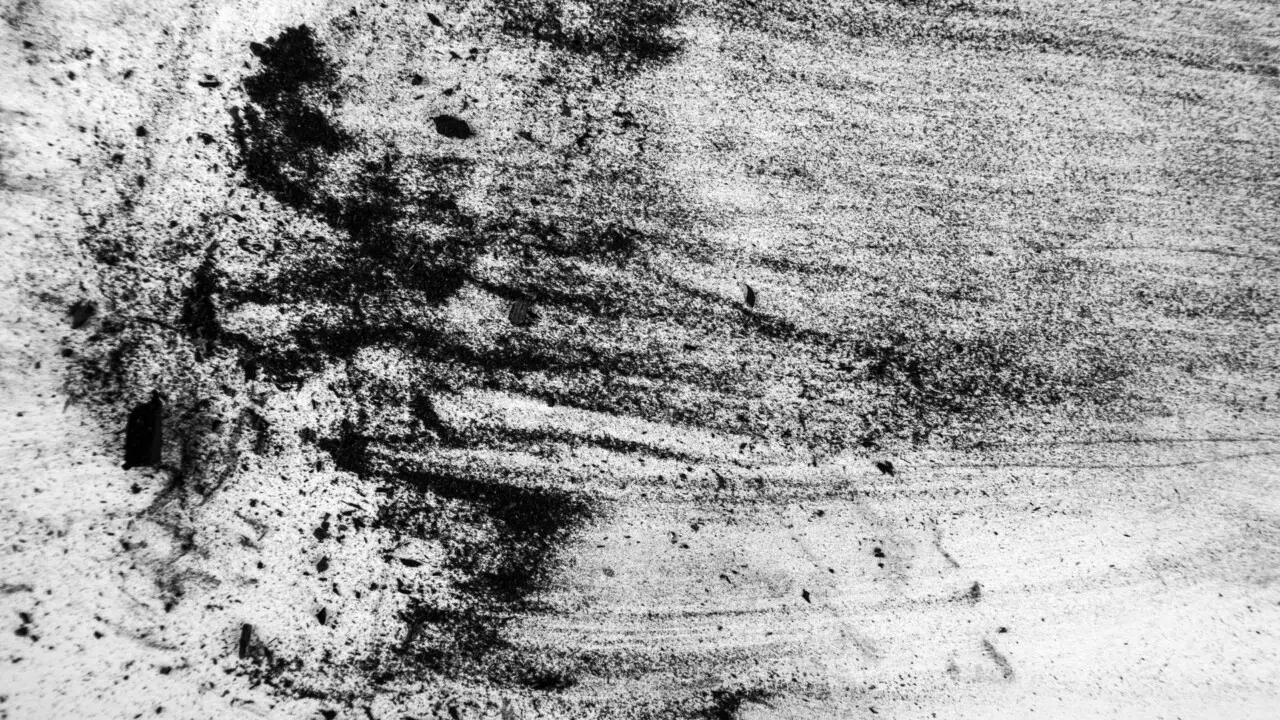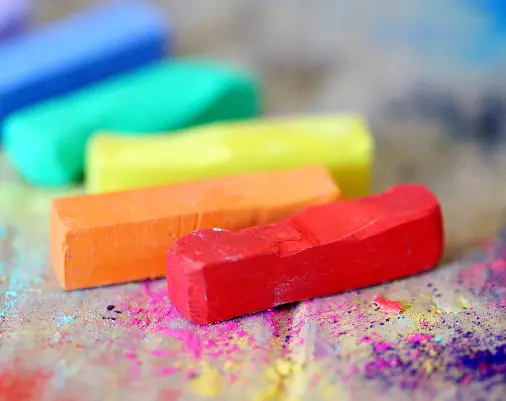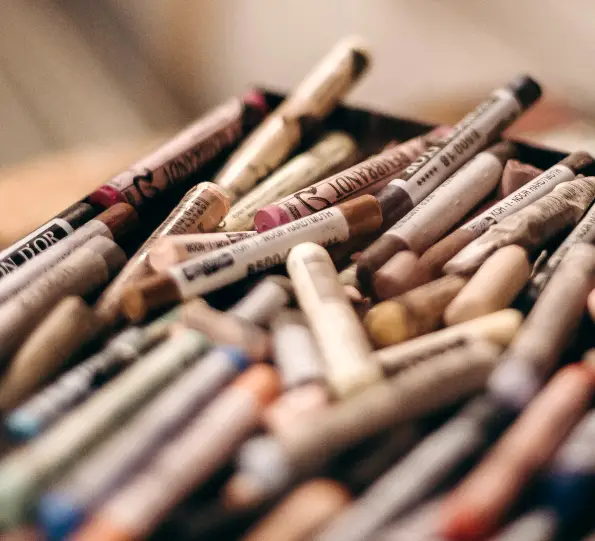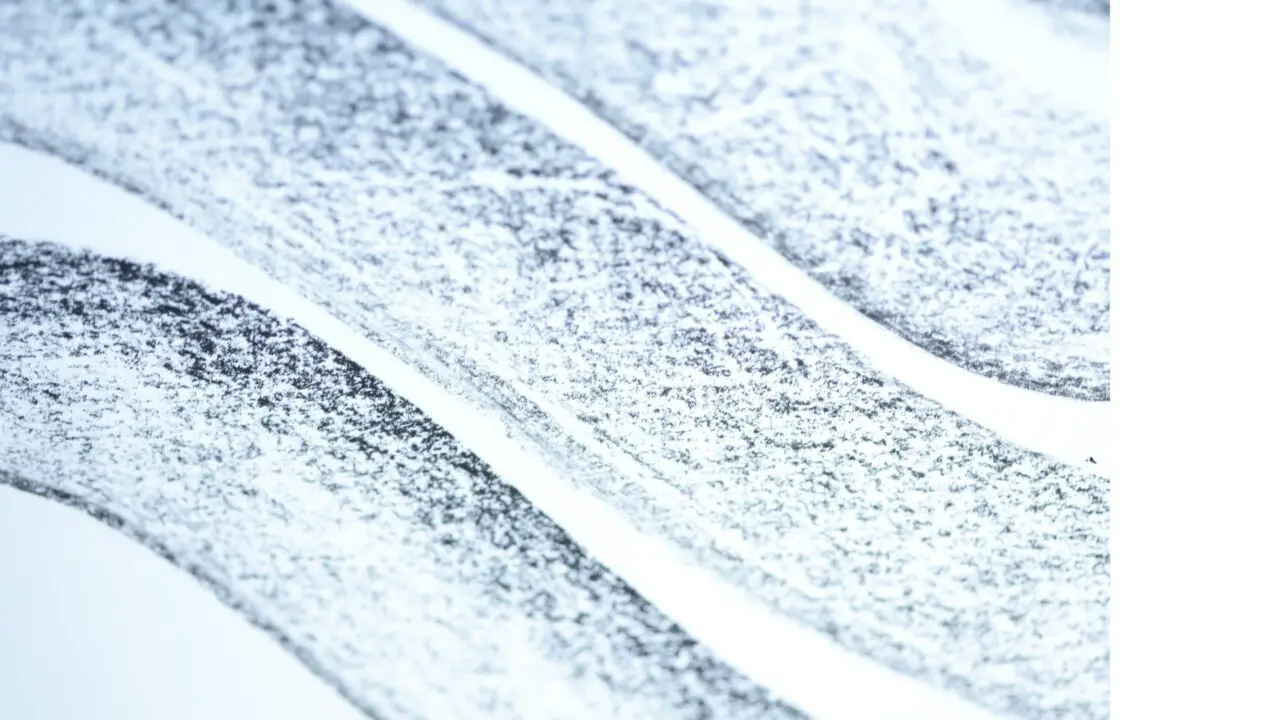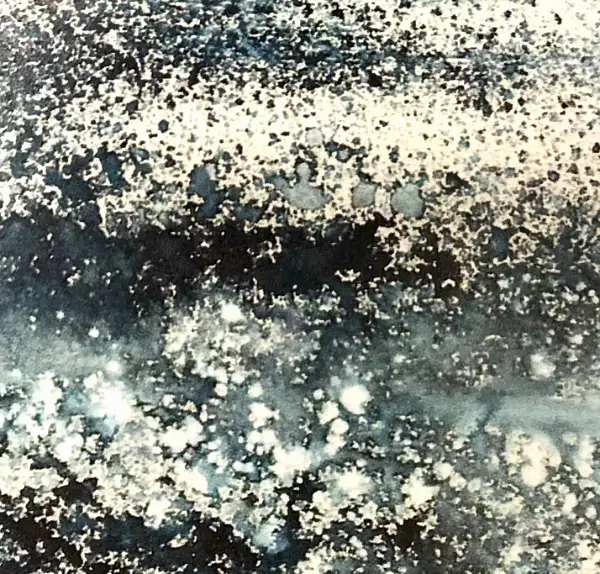What Is Dry Media?
What is dry media? When you decide to pursue art, either as a hobby or professionally, you have some decisions to make. While there's nothing wrong with working with all different media types, if you want to get proficient at something, you'll need to focus your time and energy in that area. If you choose to focus on dry media, you will have a lot of options at your disposal. What is dry media? It's an artistic medium that is dry, such as graphite, charcoal, pastel, and colored pencils. Dry media is used for drawing, while wet media is used for painting. While there are exceptions, such as pastel paintings and ink drawings, dry media generally refers to drawing. So, if you are more comfortable drawing, then pursuing dry media is a good option for you.
What Is Wet and Dry Visual Art?
If you want to combine wet and dry media to create art, you're creating mixed media art. Mixed media is a trendy style of art because it opens up many possibilities for you. For example, if you love oil painting but hate waiting for paint to dry, you could use acrylic paints as a base, add a clear sanded ground, do a detailed drawing with charcoal, then after using a workable fixative, you can use oil paint on top of the drawing. This is just one example of how you can combine wet and dry media together to create unique mixed pieces of art.
There are a few things to keep in mind if you decide to use wet and dry media together. First, make sure that you choose a surface that can handle wet and dry media. Most drawing papers don't hold up well to moisture, so you need to choose something that works well with wet and dry media, such as mixed media paper. If you incorporate oil pain into your work, you should always apply it as a final layer. Oil paint takes a long time to fully oxidize, so if you attempt to draw on top of it, you need to be sure that the painting has completely cured. If you're willing to wait a few months before finishing your piece, that's great, but most of us don't have that kind of time and patience.
If you are looking to combine various types of media and drawing techniques into your art the following video course will outline the main principles to creating successful work.
Please look at this drawing and sketching video course I have created. Use this link.
What Are Dry Media Materials?
Dry media materials are any drawing materials that are not liquid. This also includes any surfaces you work on when working with dry media materials. In terms of surfaces, most surfaces used for any type of art are suitable for dry media. The exception is when working with materials such as pastels, you'll need a surface that has sufficient tooth for them to grip.
Graphite Pencils
What is dry media? Starting with graphite is the most obvious choice if you're making a list. Except for crayons, the first type of art media that most people use is graphite. Graphite is a simple artistic material that is the most basic of media, but somehow it still has a fantastic ability to create intricate pieces of art with a wide range of values. You can use softer graphite to produce darker tones and harder graphite to produce more detail. You can even use powdered graphite to cover large areas on a surface. If you are trying to master dry media, starting with graphite is a must. It's inexpensive, and most of what you learn while drawing with graphite can be applied to other types of dehydrated media.
Charcoal Drawing
A step up in both difficulty and versatility from graphite is charcoal. Charcoal can do most of the same things that graphite can do, but its softer nature creates darker values. It's also much easier to blend than graphite. Charcoal can be used on smooth surfaces, but most artists prefer to use it on rougher surfaces that give it something to grip to. When working with charcoal, make sure that you take the time to experiment with different types. Some are harder, and some are softer, which means that some work better for details, and some blend shadows. If you want to experiment with wet media and charcoal, you can also add water to the mix, liquifying the charcoal and creating an effect similar to ink and wash.
Willow Charcoal
Willow charcoal is made from carbonized willow branches and is a favorite for many artists that work with charcoal. It is very soft and brittle and requires a lot of care when working with. Why would anyone want to work with a material that can easily break if too much pressure is applied? Willow charcoal is very popular due to its soft nature allowing artists to quickly create a wide range of values. A little pressure produces a light line, while a moderate pressure produces a darker value. If you're interested in using charcoal, adding willow charcoal to your materials is necessary.
Graphite Charcoal Pastels
Graphite charcoal pastes are a unique medium that offers the ability to create darker values that charcoal is known for a while also being more challenging and easier to handle than willow charcoal. They come in short, square sticks that can be used to create details or on their sides to cover more paper quickly. They are very similar in appearance to Conte crayons, but they are softer, so they will take some getting used to if you decide that you want to work with them.
Chalk Pastels
Chalk pastels are similar to soft pastels in that they produce colors using a dry pigment, but their application is far different. Chalk pastels work best when working on smaller, more detailed drawing areas. Since they are quite a bit harder than soft pastels, they don't cover large areas. They excel at giving an artist a much higher level of control when they are working. They work very well with soft pastels and are often used by artists to add details to a drawing when soft pastels are incapable of giving them enough control.
Oil Pastels
Oil pastels are a favorite medium for many artists that want the control of drawing with the appearance of an oil painting. Oil pastels use non-drying oil and wax to combine pigment into a pastel. The result is a rich, creamy crayon that gives artists the ability to create vibrant colors that can be easily blended together. When working with oil pastels, there are a few things to consider.
First, you need a surface with lots of teeth. If you use oil pastels on a smooth surface, they will usually just smear around. When applying the second layer of pastel, it won't adhere to the first layer. It will simply scrape into it. Second, you should always work from light to dark. Dark oil pastels can easily cover light colors, but light colors will not cover dark colors well.
Some artists take an interesting approach when using oil pastels to use mineral spirits or turpentine to melt the pastels either before or after application. This gives you the ability to create an effect much closer to oil painting. If you aren't comfortable using solvents, then there are water-soluble oil pastels that you might want to try as an alternative.
Colored Pencils
Colored pencils are a favorite of many artists because they give you the ability to add color to your work without the mess of paints. Even soft, hard, and oil pastels are messy to some extent, whereas colored pencils rarely even leave your hands dirty. Colored pencils are easy to use, easy to transport, create brilliant colors, layered and blended, and offer a high degree of control for artists.
Hard Pastels
Hard pastels are another name for chalk pastels. They are interchangeable, so once you understand how one works, you should be able to apply the same techniques to the other.
Related Posts:
- Cross Hatching Techniques: A Detailed Guide
- Scribble Drawing: Everything You Need To Know
- Mark Making Techniques: The Fundamentals
- Experimental Drawing Techniques For Inspiring Students
Dry Drawing Mediums: What are the Advantages and Disadvantages?
Dry media is any media that is applied dry to a surface. From pastels to graphite to charcoal, these are all dry media. What are the advantages of using it? There are several reasons why many artists love working with dry media.
For one thing, it's a lot less involved getting set up to work. If you use paint or ink, you have to get brushes, water, and if it's oil paint, solvents. When you work with waterless media, you simply get your supplies out and get to work. Clean up is a lot easier as well.
Sure, you might end up with dirty fingers, but that beats having to clean brushes, doesn't it? Dry media also gives artists a great deal of control. You don't have to worry about paint running or something touching the surface you are working on and ruining it. In short, it is easier to use, easier to set up, and easier to clean up. It's also much easier if you prefer to draw on location.
What Is The Difference Between Liquid And Dry Media?
The main difference between liquid and dry media is how you use it. Dry media is used to draw, wet media is used to paint. Most of the time, at least. With wet media, you will need some type of solvent, be it water, acrylic painting medium, linseed oil, or some other type of oil paint thinner. With dry media, you don't need any of these things, and you can often create works of art that are very similar in brilliance to what you could create using wet media.
What is Wet Media?
Wet media is any artistic medium that is wet. Examples include various types of paints as well as inks. Ir is often more challenging to work with, and it takes longer to set up and clean up. But, wet media also offers advantages. Depending on your preferences, you may enjoy either wet or dry media, and you may also enjoy combining the two.
Visual Effects you can Create
What types of visual effects can you create with liquid media? This is where the advantage over dry media becomes more apparent. With watercolors, you can achieve a spontaneity that only happens when water and pigment meet and flow in unpredictable ways. With acrylic paints, you can achieve impasto effects creating depth and texture to your work that dry media cannot compete with. With oil paints, you can create texture as well, or you can create beautiful luminescence by utilizing glazing. Damp media is incredibly versatile, which is why, despite it being more work to use, many artists prefer it.
Examples Of Wet Mediums:
Oil Paint
For many artists, oil painting has a special kind of reverence. When you look at the works of the old masters, most worked in oils. Oil paint can do things that no other medium can do, but there's a catch. It's a lot of work. You have to use linseed oil or other thinning mediums. You can prepare a surface to be able to accept oil paint. You also have to learn to be patient. Even with modern, quick-dry additives, an oil painting usually takes several days before a painting has cured enough that you can paint on top of it. It can take far longer if you use thicker paint. Oil painting takes time for most artists. Sure, you can work all prima paint, but that's still a much more laborious process than most other types of artistic mediums. Still, despite the effort it takes, oil painting is unique wet drawing media, and it's something that every artist should at least try exploring.
Drawing Inks
Drawing inks are unique because they are a wet medium that you use to draw with. There are alcohol inks, which you can often find in marker form, and traditional inks and acrylic inks. All will work depending on your approach. Many artists enjoy working with alcohol inks in marker form due to their ease of use, ability to be blended, and the vibrant colors they can create. If that's not your thing, you can also use a brush to draw with traditional Indian ink or use a pen. Believe it or not, you can also use a ballpoint pen, and many artists create amazing works of art using this humble type of pen.
Acrylic Painting Mediums
The first time you used acrylic paint, you probably diluted and thinned it using water. That's what most artists do when they first start to use them, and many artists continue to simply use water to dilute their paints. But, one of the biggest strengths of acrylic paint is the many types of mediums that you can use with them. You can use gel mediums to increase transparency while maintaining the same level of color saturation. You can use slow dry mediums to help slow the drying of the paint so you can blend and achieve effects similar to oil paints. You can also use heavy gel mediums to add viscosity and texture to your paints.
Watercolor Painting Mediums
If you have ever used watercolors, there's a good chance that you dilute them with water. After all, they are watercolors. But, many people aren't aware that watercolors have mediums that can be used with them. While far less common than their use with oils or acrylics, watercolor mediums can help you achieve looks that you can't get using water alone. If you work with watercolors, exploring what watercolor mediums are capable of is worth your time.
Watercolor Pencils
Watercolor pencils are unique because they can be used as both wet and dry media. However, if you're not planning on adding water to the mix, why bother using watercolor pencils instead of regular colored pencils? You could use watercolor pencils with water, allow for the water to dry, then draw on top of them. Or you could simply like how a brand of watercolor pencils blends compared to other types of traditional colored pencils. In either case, you can use them wet or dry. You can add a lot of water to produce the spontaneous effects that watercolors are known for, or you can use a little water just to blend them together, so you have more control.
Pen and Ink
Pen and ink fall into a unique category because the ink is a wet medium that you draw with. You can also paint with it, or you can do ink and wash to create more of a watercolor type of effect. You can also combine drawing and painting by drawing first then doing a wash on top of it. Or, you could work the other way and do a wash, then add details by drawing over the wash. You'll want a smooth surface that can handle the moisture no matter which approach you take. Regular drawing paper can work for ink drawing, but if you're planning on adding any wash techniques, then using mixed media paper or hot press watercolor paper is your best option.
Create Art With My Favourite Drawing Resources
General Drawing Courses. I like Udemy if you want to develop your knowledge of drawing techniques. Udemy is an excellent choice due to its wide range of creative courses and excellent refund policy. They often have monthly discounts for new customers, which you can check here. Use my link.
Sketching and Collage. Take a look at this sketching resource I have created. Use this link.
Proko. Is one of my favorite teachers who surpasses in the teaching of Anatomy and Figure drawing. Prokos course breaks down the drawing of the human body into easy-to-follow components aiding the beginner to make rapid progress. For this, I really like Proko.
Art Easels. One of my favorite ways to draw is by using a drawing easel, which develops the skill of drawing on a vertical surface. The H frame easel is an excellent vertical way to add variety to the style and type of marks you create when using a drawing board.
To see all of my most up-to-date recommendations, check out this resource I made for you.


